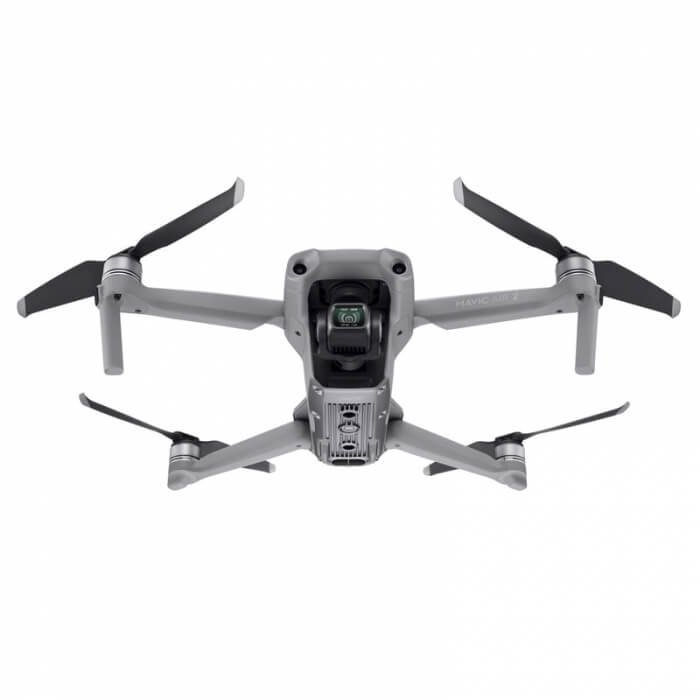Napkin dermatitis, commonly known as diaper rash, is a skin condition that affects infants and young children. It causes red, irritated, and sometimes painful skin in the diaper area. This condition is prevalent among babies because their skin is sensitive and the diaper area is prone to moisture, friction, and exposure to waste products.
Napkin dermatitis, also called diaper rash, refers to a skin irritation that occurs in the diaper area of infants and young children. It is characterized by red, inflamed, and sometimes sore skin, commonly found in the diaper region. The primary cause of diaper rash is prolonged exposure to moisture, coupled with friction and contact with urine and feces. While it is not a severe medical condition, it can be uncomfortable for the child and concerning for parents.
Types
1. Irritant Contact Dermatitis
Irritant contact dermatitis is the most common type of napkin dermatitis. Simply put, this happens when your baby’s skin gets irritated by stool, urine, or a combination of both. It’s like when your skin gets red and irritated if you keep it wet for too long. In infants, this is often due to prolonged contact with a soiled diaper.
2. Candida Dermatitis
Candida dermatitis is a fancy name for a yeast infection in the diaper area. The yeast, Candida, normally lives on our skin without causing problems. But if the conditions are right – warm, moist, and with lots of food (in the form of milk stool) – Candida can grow too much and cause redness and discomfort. This often happens after a course of antibiotics or with frequent, loose stools.
3. Allergic Contact Dermatitis
Sometimes, your baby’s skin might react to certain substances in diapers, wipes, or creams, leading to allergic contact dermatitis. Just like how some people can be allergic to peanuts or pollen, babies can also be allergic to certain substances. When this happens, their skin can get red, itchy, and inflamed.
4. Seborrheic Dermatitis
Seborrheic dermatitis is a type of skin inflammation that mainly affects oily areas of the body. In infants, this might appear as a red, scaly rash in the diaper area. It’s similar to “cradle cap,” another form of seborrheic dermatitis that affects the scalp.
5. Bacterial Dermatitis
Bacterial dermatitis is when bacteria infect the skin. This can happen if your baby has a cut, scratch, or a pre-existing rash that gets infected with bacteria. The infected area might be red, warm, and swollen, and sometimes there might be pus or fluid oozing out.
Understanding the type of napkin dermatitis your baby has is crucial for effective management and treatment. If your baby’s diaper rash doesn’t improve after a few days of home care or if it gets worse, it’s a good idea to consult a healthcare professional. They can determine the type of napkin dermatitis and suggest the most suitable treatment.
Causes
There are numerous causes for this skin condition. Here, we’re going to examine the top causes in straightforward, easy-to-understand language. If your little one is struggling with diaper rash, this guide will help you identify potential triggers and solutions.
- Prolonged Skin Wetness: Keeping a diaper on for too long can lead to a moist environment that is perfect for diaper rash to develop.
- Chafing: If the diaper is too tight, it can cause friction against the skin, leading to rashes.
- Irritation from Urine or Feces: The chemicals in urine or feces can irritate a baby’s sensitive skin if not cleaned off promptly.
- Chemical Irritation: Certain components in wipes, diapers, or laundry detergents might trigger skin irritation.
- Allergic Reaction: Some babies may be allergic to certain products used for their care, like creams, oils, or powders.
- Heat and Humidity: Hot and humid weather can exacerbate the conditions for diaper rash.
- Antibiotics: Both when taken by the baby or the breastfeeding mother, antibiotics can change the baby’s gut flora and increase the risk of rash.
- New Foods: The introduction of new foods can alter the composition of a baby’s stool, potentially causing irritation.
- Bacterial Infections: Harmful bacteria like Staphylococcus and Streptococcus can lead to skin infections, which may manifest as a diaper rash.
- Yeast Infections: A common fungus, Candida, can overgrow in a moist diaper environment and cause a rash.
- Sensitive Skin: Babies with skin conditions like eczema or seborrhea are more prone to diaper rash.
- Diarrhea: Frequent bowel movements can increase the chance of diaper rash due to increased exposure to fecal matter.
- Teething: Although not directly causing diaper rash, the drooling and diarrhea associated with teething can contribute to its development.
- Introduction of Solid Foods: The change in bowel movements when transitioning to solids can trigger diaper rash.
- Immunizations: Some babies may develop a diaper rash as a side effect of vaccinations.
- Rare Skin Disorders: Certain rare skin conditions can mimic diaper rash or exacerbate it.
- Poor Diaper Quality: Low-quality diapers may not absorb well, leading to a wet environment that triggers rashes.
- Stool pH Changes: The introduction of certain foods can change the pH of a baby’s stool, causing irritation.
- Infrequent Diaper Changes: Not changing the diaper often enough can lead to prolonged exposure to irritants.
- Breastfeeding: Certain substances in breast milk may cause a rash in some babies.
- Food Allergies: Allergic reactions to certain foods can result in diaper rash.
- Lactose Intolerance: This can cause diarrhea, which in turn, can lead to diaper rash.
- Hormonal Changes: Hormonal changes in a baby’s body can influence skin condition and increase the risk of diaper rash.
- Inadequate Rinsing: Soap or detergent residues left on cloth diapers can cause irritation.
- Dehydration: Lack of hydration can impact the skin’s ability to repair itself, contributing to diaper rash.
- Viral Infections: Certain viral infections can cause symptoms, like diarrhea, that can lead to diaper rash.
- Ammonia Dermatitis: Prolonged contact with ammonia found in urine can cause this type of diaper rash.
- Inadequate Air Circulation: Lack of air flow in the diaper area can create a damp environment that promotes rash development.
- Over Cleansing: Harsh cleaning can strip the skin’s natural protective barrier, making it susceptible to diaper rash.
- Poor Diet: A poorly balanced diet can alter a baby’s stool composition and possibly lead to diaper rash.
Understanding these causes helps parents take preventative measures and ensure their child’s comfort. By maintaining regular diaper changes, ensuring the diaper area is clean and dry, and noting any changes to your child’s diet or environment, you can effectively reduce the risk of diaper rash. Always consult with a healthcare professional if your baby’s diaper rash persists or worsens.
Remember, every child is different and what works for one may not work for another. Knowledge is key when it comes to preventing and treating diaper rash. Be observant and responsive to your child’s needs for their utmost comfort and well-being.
Symptoms
Here are the top symptoms of napkin dermatitis, explained in easy-to-understand terms.
- Redness: This is the most common symptom. The skin in the diaper area might appear redder than usual, signifying irritation.
- Swelling: The affected area might become puffy or swollen, usually due to inflammation.
- Warmth: The skin on the rash may feel warmer to the touch compared to other areas of the body.
- Tenderness: Your baby might react when the area is touched, indicating it’s sore or tender.
- Peevishness: A baby with a diaper rash may seem unusually irritable or fussy, especially during diaper changes.
- Blisters: In severe cases, small blisters may form on the skin. This is a sign the rash needs immediate attention.
- Dryness or Peeling: The skin may appear unusually dry or start peeling, due to loss of moisture.
- Roughness: The skin texture might become rough or bumpy, losing its usual smooth feel.
- Scaling: The skin may start to scale, a sign of more severe dryness and inflammation.
- Pus or Discharge: If the rash becomes infected, you might notice pus or a yellowish discharge.
- Odor: An unusual odor may accompany an infected rash, signaling a possible yeast or bacterial infection.
- Spreading rash: The rash might start to spread to areas around the diaper, like the stomach or thighs.
- Skin cracks: In extreme cases, the skin might crack or bleed, a sign the rash has worsened.
- Appetite changes: Your baby might eat less than usual, due to general discomfort or distress.
- Sleep disturbances: Napkin dermatitis can disrupt your baby’s sleep, leading to frequent waking or unusual fussiness.
- Frequent crying: More crying than usual, especially during diaper changes, can signal your baby’s discomfort.
- Resistance to diaper changing: Your baby might seem unusually resistant to diaper changes.
- Pimples: Small pimples may appear in the rash area, indicating a possible yeast infection.
- Rash not improving: If the rash doesn’t improve after a few days of home care, it might be more severe than usual.
- Fever: Although rare, a fever can accompany severe or infected diaper rashes.
By understanding these symptoms, you can identify and treat napkin dermatitis quickly. Remember, while napkin dermatitis can be distressing, it’s a common part of early childhood and is usually easily treated. However, if your baby exhibits severe symptoms or if the rash doesn’t improve with care, don’t hesitate to consult a healthcare provider.
Diagnosis
Diagnosis and tests for napkin dermatitis, simplifying medical jargon into plain English to help you understand better.
- Visual Inspection: This is the most basic method. A healthcare professional visually examines the rash to check for tell-tale signs of napkin dermatitis, like redness and inflammation around the diaper area.
- Medical History: Your doctor may ask about your baby’s recent activities, diet, or diapering routine to help pinpoint potential causes of the rash.
- Skin Swab Test: This involves collecting a small sample from the affected skin area with a swab to test for infections that may be causing or worsening the rash.
- Fungal Culture: If a yeast infection (often Candida) is suspected, a culture test might be done to confirm.
- Patch Testing: Used to determine if the rash is due to an allergic reaction to diaper materials or creams.
- Allergen-Specific IgE Testing: This blood test identifies specific allergens causing an allergic reaction in your baby.
- pH Testing: A simple test that measures the pH of your baby’s skin. Higher pH can indicate a bacterial or yeast infection.
- Urinalysis: Examines urine for signs of infections or diseases that could contribute to the rash.
- Bacterial Culture: If a bacterial infection is suspected, a culture might be taken from the rash area.
- KOH Prep Test: This test helps identify fungal or yeast infections on the skin.
- Dermoscopy: A non-invasive diagnostic tool that allows doctors to examine skin conditions more closely.
- Stool Sample Analysis: Checks for the presence of bacteria, yeast, or parasites that might be causing the rash.
- Wet Mount Examination: A microscopic examination to detect yeast or bacteria.
- Wood’s Lamp Examination: This special light can show if certain bacteria or fungi are present.
- Gram Stain: This test identifies bacteria that may be causing an infection.
- Potassium Hydroxide (KOH) Test: Used to determine the presence of fungi.
- Skin Biopsy: Although rarely used for diaper rash, in severe or unresponsive cases, a small skin sample may be taken for examination.
- Periodic Acid-Schiff (PAS) Stain: This special stain can help visualize fungi in skin samples.
- Scraping Test: The doctor may scrape off a small part of the skin to look for mites or fungi under a microscope.
- Inflammatory Markers Test: Blood tests can help identify signs of inflammation in the body.
- Antifungal Susceptibility Test: Determines which antifungal treatment would work best.
- Dietary Assessment: The doctor may ask about the child’s diet to see if any foods could be causing the rash.
- Histamine Level Test: High levels of histamine can indicate an allergic reaction.
- Total IgE Test: This test measures the amount of IgE, an antibody that can indicate an allergy.
- Epidermal Skin Test: This involves applying a small amount of a suspected allergen to the skin to see if a reaction occurs.
- Eosinophil Count: Eosinophils are a type of white blood cell that can increase with allergies. A blood test can measure these levels.
- Mantoux Test: While not directly related to napkin dermatitis, it checks for tuberculosis, which can cause general skin problems.
- Zinc Level Test: Low levels of zinc in the body can sometimes cause a rash.
- Lactose Intolerance Test: Lactose intolerance can cause diarrhea, leading to diaper rash.
- Sweat Chloride Test: This test checks for cystic fibrosis, a condition that can lead to frequent diaper rash due to persistent diarrhea.
Treatment
Don’t worry – there are plenty of treatments and they’re often simple to use. Here’s a list of the top remedies, explained in easy-to-understand language.
1. Frequent Diaper Changes: Change your baby’s diaper often to keep the area dry and clean. Wetness can irritate the skin.
2. Diaper-Free Time: Allow your baby some diaper-free time daily. This lets the skin breathe and reduces moisture.
3. Barrier Creams: These creams create a protective layer on the skin. They shield the baby’s bottom from moisture and irritants.
4. Zinc Oxide Creams: These are a type of barrier cream. Zinc oxide creams soothe and protect the skin.
5. Petroleum Jelly: This common household item forms a barrier on the skin, protecting it from wetness.
6. Mild Soaps and Wipes: Use mild, fragrance-free soaps and wipes. They’re less likely to irritate your baby’s skin.
7. Steroid Creams: Steroid creams, used on a doctor’s advice, reduce inflammation and treat severe rashes.
8. Antifungal Creams: If your baby’s rash is caused by yeast, these creams can help. Always check with your doctor first.
9. Hydrogel Pads: These soothing pads hydrate the skin and aid healing. They’re a bit like wet band-aids.
10. Cornstarch: This kitchen staple absorbs moisture, helping to keep the diaper area dry.
11. Oatmeal Baths: Soothing, calming, and great for the skin. Adding oatmeal to your baby’s bath can help relieve discomfort.
12. Breast Milk: Surprisingly, breast milk can help soothe and heal baby’s skin. Apply a few drops to the rash.
13. Coconut Oil: It’s moisturizing and has antimicrobial properties. Apply a thin layer to the rash.
14. Calendula Cream: This natural cream is known for its healing properties. It can soothe and repair irritated skin.
15. Chamomile Tea: A chamomile tea bath can soothe inflammation and speed up healing.
16. Aloe Vera: Well-known for healing burns, aloe vera can also help with diaper rash. Apply pure aloe vera gel to the affected area.
17. Witch Hazel: This natural astringent helps reduce inflammation. Apply with a soft cloth.
18. Baking Soda: A baking soda bath can help reduce acidity in your baby’s skin and soothe the rash.
19. Lavender Oil: Mixed with a carrier oil, lavender oil can soothe the skin and promote healing.
20. Vinegar: Diluted vinegar can help balance your baby’s skin pH and prevent the growth of yeast.
21. Probiotics: These beneficial bacteria can help fight off the yeast that causes some rashes.
22. Epsom Salt: An Epsom salt bath can help soothe the skin. Always ensure the bath water isn’t too hot.
23. Sheer Cornstarch Baby Powder: This absorbs moisture, keeping your baby’s skin dry.
24. Tea Tree Oil: Mixed with a carrier oil, tea tree oil can combat yeast and bacteria. It must be used in very small amounts.
25. Disposable Diapers: Some babies react to certain brands. Switching to a different type or brand might help.
26. Cloth Diapers: Some babies react to disposable diapers. In this case, try using cloth diapers.
27. French Green Clay: This natural absorbent substance can draw out toxins and help heal the skin.
28. Seabuckthorn Oil: Rich in antioxidants and essential fatty acids, this oil helps heal and protect the skin.
29. Shea Butter: It’s a natural moisturizer that can help soothe and heal irritated skin.
30. Air Circulation: Use loose-fitting diapers to improve air circulation and reduce moisture.
Remember, it’s essential to consult your doctor before trying new treatments, especially home remedies. Always do a patch test to make sure your baby doesn’t have an allergic reaction. With patience and the right approach, napkin dermatitis can be effectively managed and healed.
















